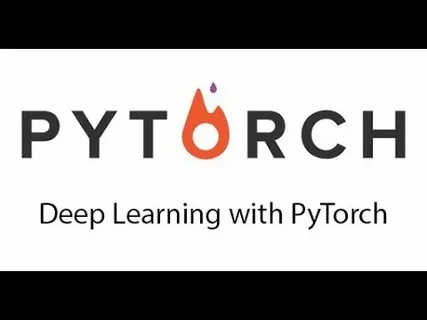Introduction
PyTorch is one of the most popular deep learning frameworks, widely used by researchers, data scientists, and AI practitioners. Developed by Facebook’s AI Research (FAIR) lab, PyTorch provides a flexible and intuitive approach to building deep learning models. Its dynamic computation graph and easy debugging capabilities make it a preferred choice over static frameworks like TensorFlow 1.x.
This article provides an in-depth guide to getting started with PyTorch for deep learning, covering installation, core concepts, model building, training, and deployment. If you are enrolled in a Data Science Course, learning PyTorch is essential for mastering deep learning techniques.
What is PyTorch?
PyTorch is an open-source machine learning framework developed by Facebook’s AI Research (FAIR) lab. It is widely used for deep learning applications such as computer vision, natural language processing (NLP), and reinforcement learning. PyTorch is built on the Torch library and provides an intuitive, flexible, and Pythonic approach to building and training neural networks.
One of PyTorch’s defining features is its dynamic computation graph, which allows real-time modifications to the model structure, making debugging and experimentation easier compared to static frameworks like TensorFlow 1.x. Another key advantage is automatic differentiation (Autograd), which simplifies the computation of gradients during backpropagation.
PyTorch supports GPU acceleration using CUDA, enabling efficient execution of large-scale deep learning models. It also integrates with torchvision for image processing, torchaudio for audio processing, and torchtext for NLP tasks.
Due to its ease of use and strong support in research and production, PyTorch has become a preferred choice in the AI community. Many Data Science Course programs now include PyTorch as a fundamental deep learning framework, helping students build models efficiently for real-world AI applications. Whether for academic research or industrial deployment, PyTorch is a powerful tool for deep learning.
Key Features of PyTorch
Dynamic Computation Graphs: Unlike TensorFlow 1.x, PyTorch allows on-the-fly modifications to neural networks.
- Easy Debugging: Since PyTorch behaves like standard Python code, it is easier to debug compared to frameworks with static graphs.
- Automatic Differentiation (Autograd): PyTorch automatically computes gradients, simplifying backpropagation.
- GPU Acceleration: PyTorch supports CUDA, enabling deep learning models to run efficiently on GPUs.
- Extensive Community Support: Used in academia and industry, PyTorch has a rich ecosystem of libraries and pretrained models. Many data course curricula now include PyTorch due to its real-world applications. Thus, a Data Scientist Course in Hyderabad, Chennai, Pune, and such cities will have extensive coverage on PyTorch as a preferred deep learning application.
Installing PyTorch
Installing PyTorch is straightforward and depends on your operating system and preferred backend (CPU/GPU). The recommended method (using pip):
pip install torch torchvision torchaudio
For CUDA-enabled installations (to leverage GPU acceleration):
pip install torch torchvision torchaudio –index-url https://download.pytorch.org/whl/cu118
To verify the installation:
import torch
print(torch.__version__)
print(“CUDA Available:”, torch.cuda.is_available())
Tensors in PyTorch
Tensors are the fundamental building blocks in PyTorch, similar to NumPy arrays but with GPU support.
Creating Tensors
import torch
# Create a tensor
tensor = torch.tensor([[1, 2], [3, 4]])
print(tensor)
# Random tensor
rand_tensor = torch.rand(2, 2)
print(rand_tensor)
Operations on Tensors
a = torch.tensor([2, 3])
b = torch.tensor([4, 5])
# Element-wise addition
print(a + b)
# Matrix multiplication
x = torch.rand(2, 3)
y = torch.rand(3, 2)
result = torch.matmul(x, y)
print(result)
Building a Neural Network in PyTorch
PyTorch provides the torch.nn module for defining neural networks.
Step 1: Define the Model
import torch.nn as nn
class NeuralNet(nn.Module):
def __init__(self, input_size, hidden_size, output_size):
super(NeuralNet, self).__init__()
self.fc1 = nn.Linear(input_size, hidden_size)
self.relu = nn.ReLU()
self.fc2 = nn.Linear(hidden_size, output_size)
def forward(self, x):
x = self.fc1(x)
x = self.relu(x)
x = self.fc2(x)
return x
Step 2: Initialise the Model
model = NeuralNet(input_size=10, hidden_size=5, output_size=2)
print(model)
Training a Model in PyTorch
Here are the steps for training a model in PyTorch as will be taught in a standard data course such as a Data Scientist Course in Hyderabad.
Step 1: Define Loss and Optimiser
import torch.optim as optim
criterion = nn.CrossEntropyLoss()
optimizer = optim.Adam(model.parameters(), lr=0.001)
Step 2: Load Dataset
For deep learning tasks, PyTorch provides torchvision.datasets for image datasets.
from torchvision import datasets, transforms
# Define transformations
transform = transforms.Compose([transforms.ToTensor(), transforms.Normalize((0.5,), (0.5,))])
# Download dataset
train_dataset = datasets.MNIST(root=’./data’, train=True, transform=transform, download=True)
train_loader = torch.utils.data.DataLoader(train_dataset, batch_size=32, shuffle=True)
Step 3: Training Loop
num_epochs = 5
for epoch in range(num_epochs):
for images, labels in train_loader:
optimizer.zero_grad()
outputs = model(images.view(-1, 10)) # Flattening input
loss = criterion(outputs, labels)
loss.backward()
optimizer.step()
print(f”Epoch [{epoch+1}/{num_epochs}], Loss: {loss.item():.4f}”)
Evaluating the Model
correct = 0
total = 0
with torch.no_grad():
for images, labels in train_loader:
outputs = model(images.view(-1, 10))
_, predicted = torch.max(outputs, 1)
total += labels.size(0)
correct += (predicted == labels).sum().item()
accuracy = 100 * correct / total
print(f”Model Accuracy: {accuracy:.2f}%”)
Saving and Loading Models
Saving the Model
torch.save(model.state_dict(), “model.pth”)
Loading the Model
loaded_model = NeuralNet(10, 5, 2)
loaded_model.load_state_dict(torch.load(“model.pth”))
Deployment with PyTorch
Converting to TorchScript for Inference
PyTorch allows conversion to TorchScript for optimised inference.
scripted_model = torch.jit.script(model)
torch.jit.save(scripted_model, “scripted_model.pt”)
Deploying with ONNX
For cross-platform deployment, convert PyTorch models to ONNX format.
dummy_input = torch.randn(1, 10)
torch.onnx.export(model, dummy_input, “model.onnx”)
Transfer Learning with Pretrained Models
Pretrained models in torchvision.models help speed up training.
from torchvision import models
pretrained_model = models.resnet18(pretrained=True)
print(pretrained_model)
Conclusion
PyTorch is a powerful and flexible deep learning framework, widely used for research and production. Its dynamic computation graph, ease of debugging, GPU support, and strong community make it a favorite among AI practitioners.
If you are pursuing a Data Science Course, mastering PyTorch will enhance your deep learning skills and prepare you for AI-driven roles in industry and research. With its flexibility and support for cutting-edge applications, PyTorch is a must-learn framework for anyone serious about deep learning. It is recommended that professionals start experimenting right away and take their AI knowledge to the next level.
ExcelR – Data Science, Data Analytics and Business Analyst Course Training in Hyderabad
Address: Cyber Towers, PHASE-2, 5th Floor, Quadrant-2, HITEC City, Hyderabad, Telangana 500081
Phone: 096321 56744


